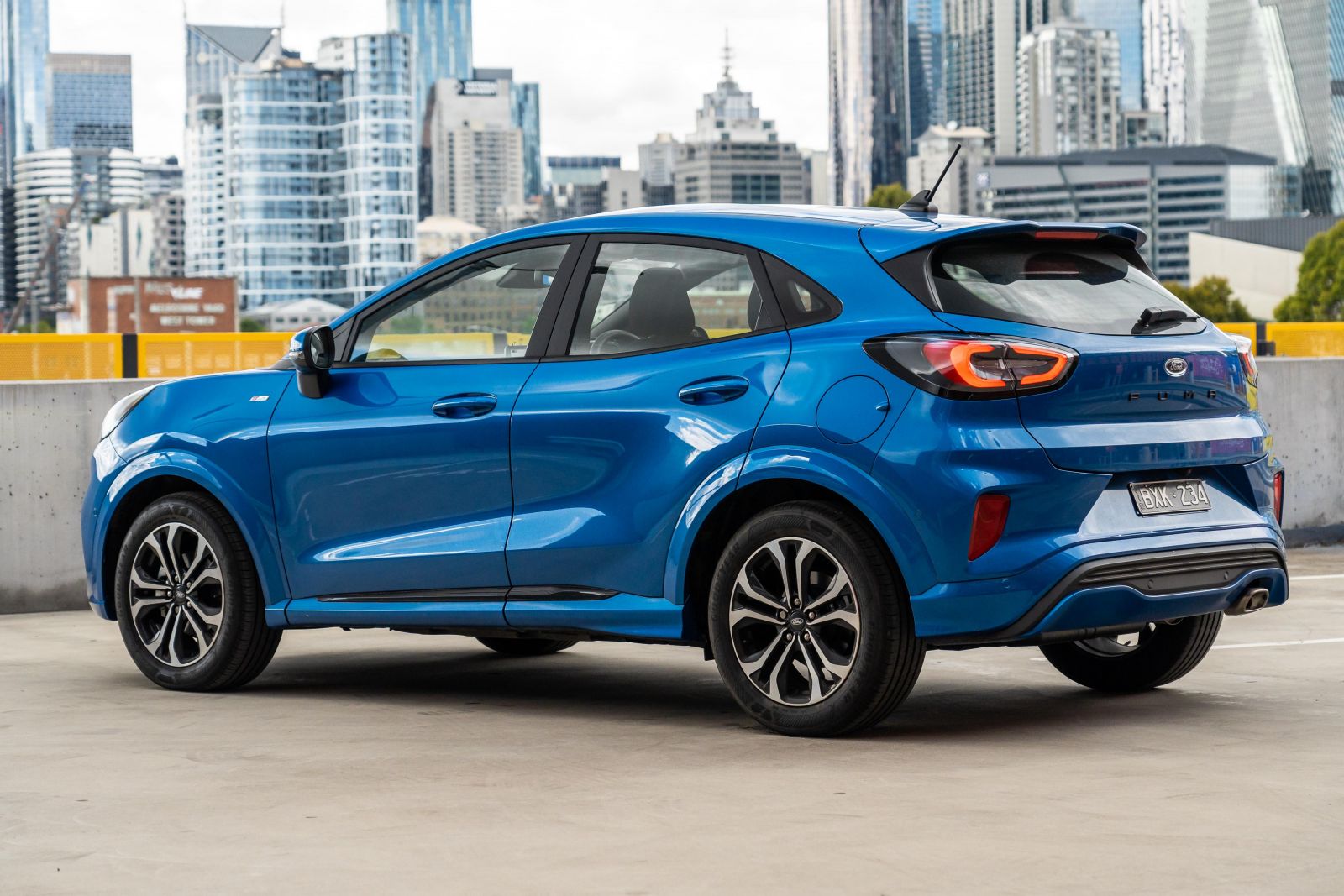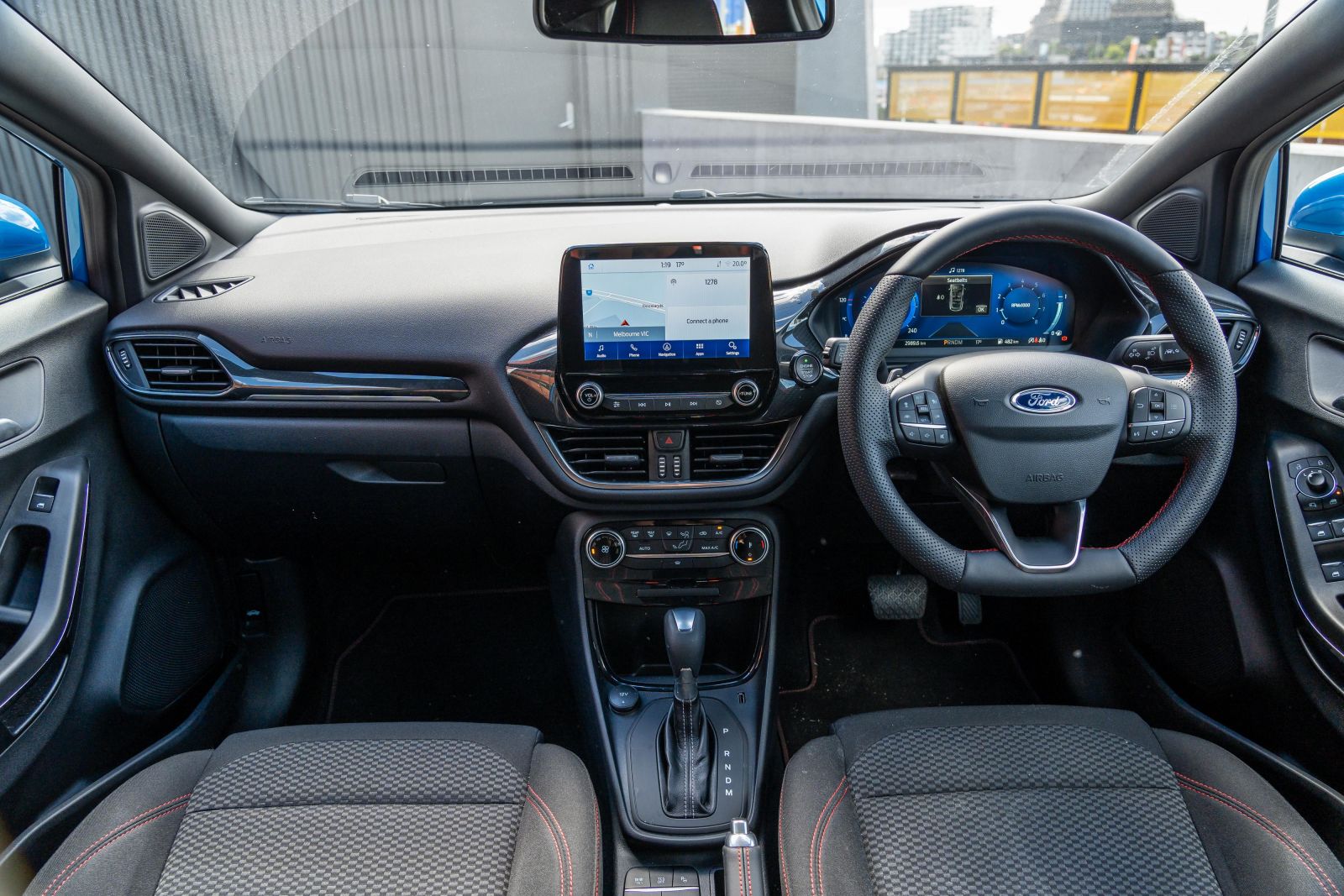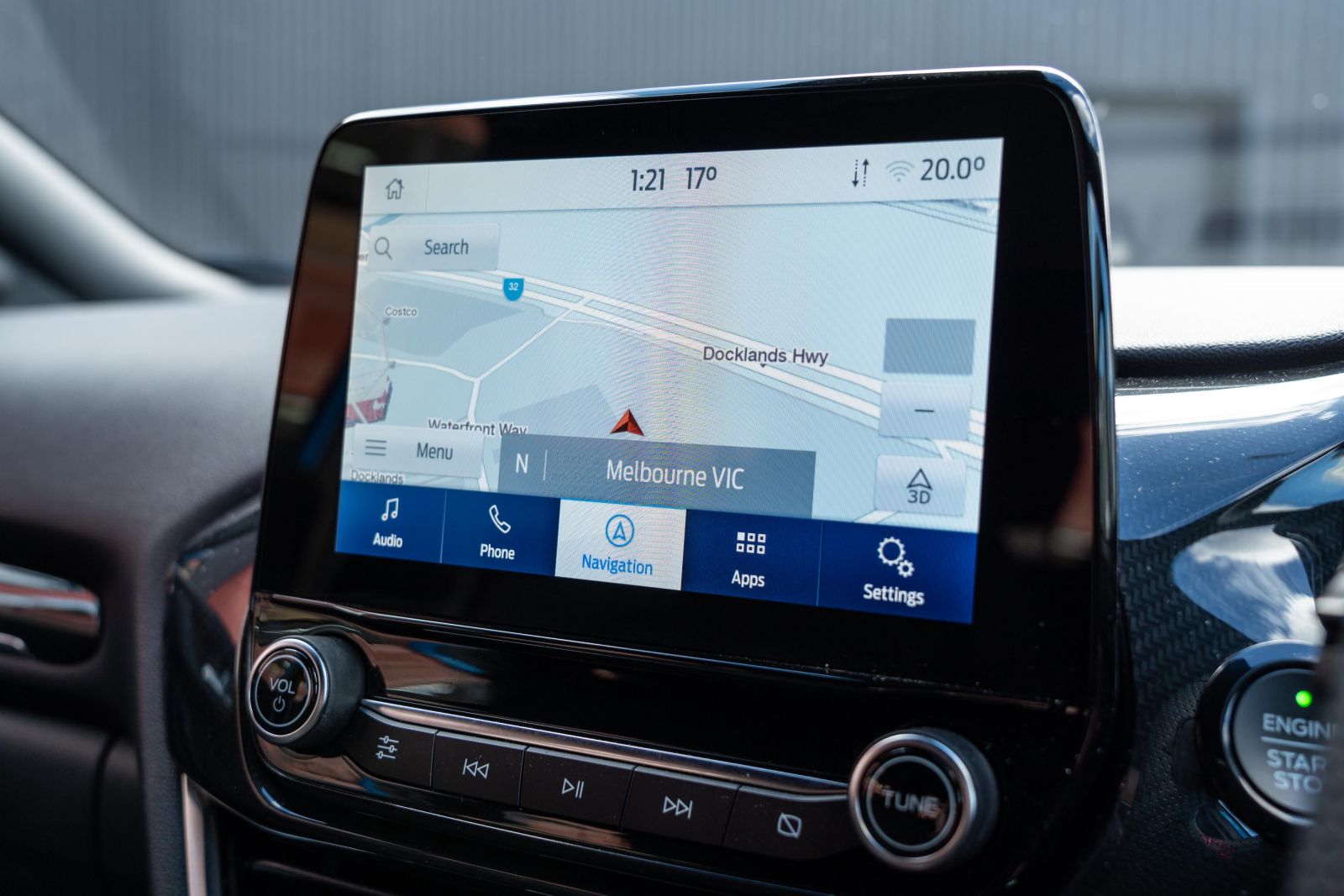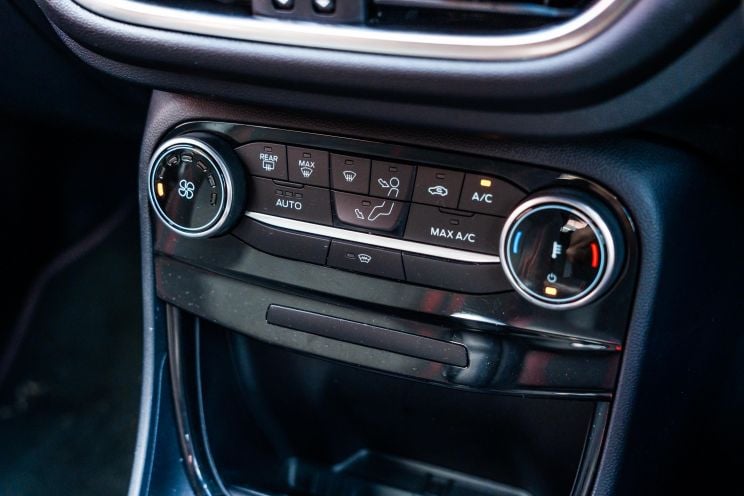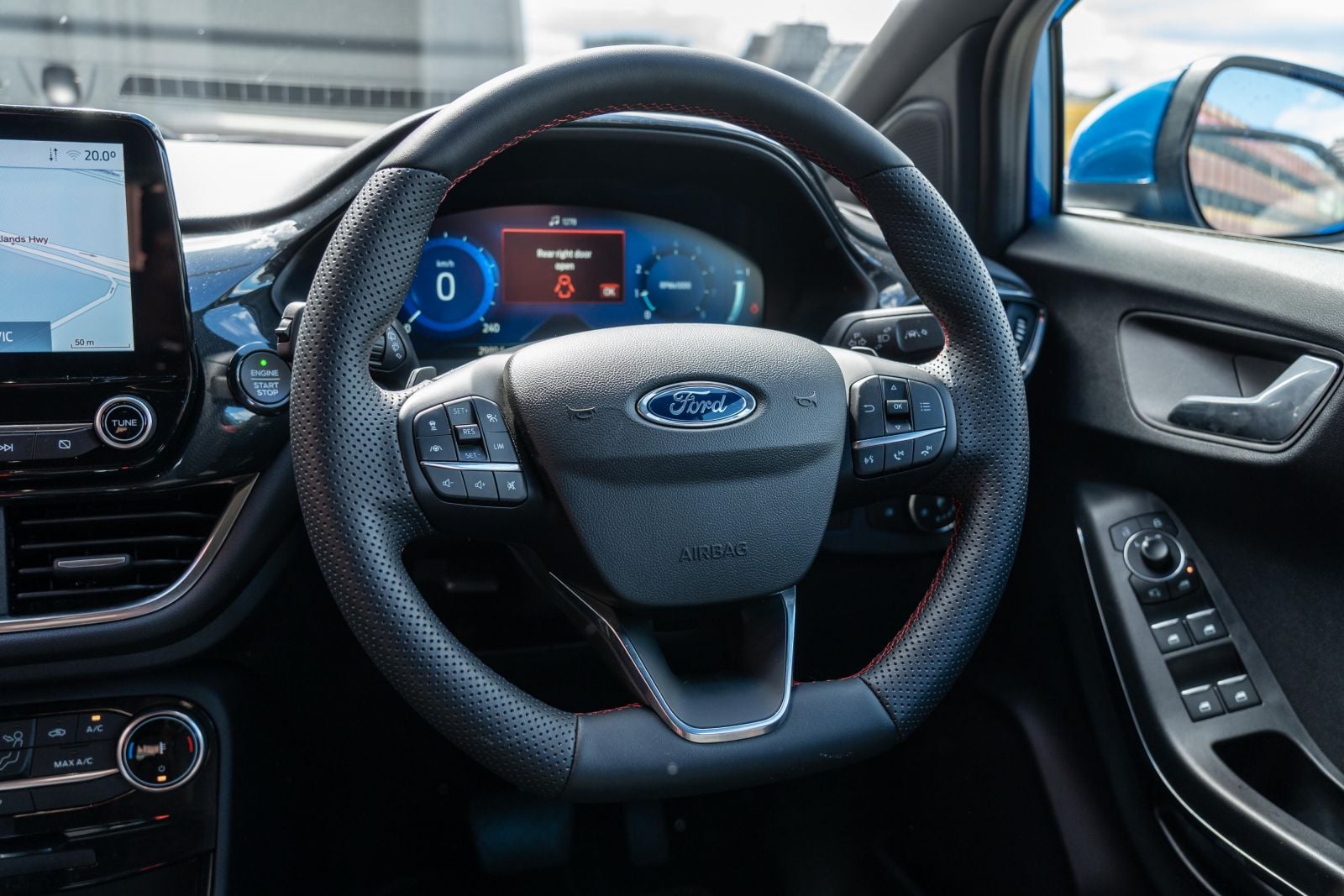Buyers looking for a fashionable small and SUV have more choice than just about anyone else right now.
That means every brand keen to compete must stand out from the herd on price, technology, design, practicality or, in Ford’s case, a sporty look backed by particularly agile handling.
This is just what the European-made (Romania) Puma delivers, a chic high-riding city car that drives with a sense of vim and vigour.
With the Fiesta and Focus now retired, the Puma is also the Blue Oval’s smallest and cheapest car, making it the entry point to its line-up.
Ford Australia’s challenge is to remind buyers that it doesn’t just make tough-looking utes and SUVs, or American muscle cars. It has a really underrated, European-led SUV range too.
Let’s take a closer look, focusing on the mid-range Puma ST-Line.
How much does the Ford Puma ST-Line cost?
The Ford Puma range comes in three variants. The base Puma costs $30,840 before on-road costs, the ST-Line $33,190, and the ST-Line V $36,390. All prices exclude on-road costs.
Drive-away prices vary by region but expect the $33,190 (before on-roads) Puma ST-Line to cost around $38,000 on the road. Metallic paint like our car’s Desert Island Blue adds $700.
Which means you’re not getting much change from $40,000 in the real world.
This means that while it’s certainly not a cheap car, it’s not really an outlier against its competitors. Buyers keen on the SUV body are asked to pay a premium and usually do.
Key rivals include:
Prices exclude on-road costs
What is the Ford Puma ST-Line like on the inside?
Our test car came with the optional proximity-sensing key fob, so it unlocks when you pull the handle. At the same time the side mirrors fold out and illuminate the side of the car.
The seats, trimmed in dark fabric with a checkered pattern and red stitching, offer good side support but could use more side bolstering.
Adjustment (forwards and backwards, up and down) is manual, and there’s another manual dial that adds middle-back (lumbar) support.
While the interior is narrow and feels it, there’s ample headroom (I’m 194cm tall), and the requisite slightly elevated driving position over a comparable light hatchback.
The reversing camera is quite sharp and has guidelines, but it’s not the easiest cabin to see out of due to the sporty styling.
The slightly flat-bottom wheel has the squishy perforated hand grips typical of Ford’s sportier products, and spoke-mounted buttons for cruise control and volume (left) or trip computer, voice control and track skip (right).
Unlike many Europe-sourced cars the Puma’s indicator stalk is on the right-hand side of the steering column.
The digital cluster looks sharp and offers a nifty animated start sequence, as well as animated graphics when you cycle through the various driving modes. It’s vivid and well-designed, but limited in what it can do. For instance it can’t display maps like VW Group products.
The Ford’s interior trims and materials aren’t exactly what I’d call premium in feel – for instance there are some hard plastics on the doors and lower dash, and the seat trim feels hardy but not exactly plush. But the fake carbon-fibre trim on the dash adds a sporty touch.
The 8.0-inch centre touchscreen runs Ford’s older Sync 3 infotainment system.
It’s not the flashiest-looking software but works really well, with a logical shortcut bar along the bottom and well-ordered menus making everything easy to use on the go.
While the ST-Line misses out on the flagship variant’s 10-speaker B&O sound system, the base six-speaker audio system in our test car is really rather good anyway, with deep and clear bass and no annoying panel vibrations through the doors.
The satellite navigation system includes live traffic updates, a helpful motorway exit information pop-up, and responds nicely to pinch and zoom touch inputs. There’s also Apple CarPlay and Android Auto of course, albeit of the outdated USB-A wired variety.
A wireless charging pad is standard, and mounted in such a way to keep your phone secure and not sliding about.
The single-zone climate control dials and buttons are easy to work out, and temperate changes are displayed on the touchscreen above. At night the controls are illuminated in icy blue, something of a Ford signature.
Along the centre tunnel you’ll find a 12V socket and a distinctly old-school gear shifter and manual handbrake combination, plus a bank of buttons for driving mode adjustments, and to disengage parking sensors, traction control and start/stop.
The centre console is tiny but at least it doubles as a centre armrest.
Jumping to the back seats, it’s safe to say this is not a car for growing families. Head room and knee room in the rear were very tight for someone my size, but for greater context it’s tighter back there than in something like a Hyundai i30.
There are also no rear air vents or USB points, nor is there a flip-down centre armrest. No small SUV in this class is a fully-fledged family car, but the Puma seems particularly pokey.
Our test car had the optional powered tailgate which is able to open higher than most, revealing a relatively capacious 410L boot. It has a floor divider allowing two different boot depths, and while the lip is high it’s much roomier than you might have guessed.
The back seats fold down 60/40, and there are bag hooks and a 12V, plus a temporary spare wheel – better than a repair kit.
What’s under the bonnet?
While the Europeans get a mild-hybrid and a full-fat Puma ST pocket rocket, Australians for now at least only get the one engine option.
This is a 1.0-litre turbocharged three-cylinder petrol engine – common in the class, also found in the Stonic, Juke, Kamiq and T-Cross for instance – making a quite hearty 92kW of power and 170Nm of torque, the latter available from only 1400rpm.
It comes standard as front-wheel drive and mated to a seven-speed DCT (dual-clutch automatic transmission).
Claimed fuel efficiency is a low 5.3 litres per 100km.
How does the Ford Puma ST-Line drive?
The 4.2m-long Puma lives up to its badge by offering frankly cat-like agility in the urban jungle. The steering is quick and responsive, and the nose keen to duck into sharp corners.
This is no surprise given the Puma shares much under its skin with the sprightly little Fiesta (RIP) and was engineered for Ford of Europe, which generally has a real dynamic focus. The tuning circle is 10.4m, and you’ll have great time if you decide to test this!
While the ST-Line comes with ‘sports’ suspension that reduces clearance by 2mm and ensures the body stays quite flat in corners, the ride quality is pretty good over bad roads too.
Perhaps because there’s a decent amount of tyre sidewall (215/55) on the Goodyear tyres (more than the ST-Line V’s 18-inch wheels), or just because of the well-tuned springs and passive dampers, it dispatches potholes and cobbles with little fuss.
It also feels stable and sturdy at highway speeds, with our test car’s optional adaptive cruise control and lane-keeping aid with steering assistance both working really well, and more importantly with a good degree of subtlety.
While the 92kW three-cylinder engine looks diminutive on paper, it actually offers plenty of pep and pulls the 1287kg (kerb) Puma along nicely off the mark, although it runs out of puff eventually and our roughly 10-second 0-100km/h time is far from rapid.
It has a charming exhaust note and plenty of torque available right down low, and it’s quite responsive to a hard dose of accelerator, with less turbo and transmission lag than some similar engines out there.
Being a DCT, the gearbox changes ratios really quickly on the move. There’s a little hint of jerkiness and indecision at low speeds unless you progressively modulate your throttle inputs, but again it’s not the worst offender in class. In fact it’s rather polished.
While claimed fuel efficiency is just 5.3 litres per 100km, our average was 6.8L/100km over about 800km of mixed-route driving. Good, but not nearly the claim.
There are a few different driving modes to cycle through, controlled by a button on the transmission tunnel and confirmed through a popup in the instruments. For example the sports setting tells the transmission to hold lower gears longer, for better response.
While there are also paddle shifters for those who prefer manual mode, the gearbox is generally pretty intuitive at grabbing the right gear on its own.
We should also note that in the UK, the Puma comes with a ramped-up 114kW 1.0-litre turbo-petrol engine (24kW more than our market’s version) with a 48V mild-hybrid system, but it won’t be offered here for now.
It’s a shame because this chassis could easily tame more grunt – especially since there’s a 147kW ST version also offered overseas.
What do you get?
Puma FWD highlights:
- 17-inch black alloy wheels
- 16-inch temporary spare
- Power-folding, heated side mirrors
- LED projector headlights, auto on/off
- LED daytime running lights
- LED taillights
- Side puddle lamps
- Matte black grille insert
- Rooftop spoiler
- Rain-sensing wipers
- Proximity alarm
- Rear parking sensors
- Cruise control
- Auto climate control
- Ebony cloth seats, grey stitching
- Imitation leather wheel, gear lever and handbrake
- Floor mats
- LED interior ambient lighting
- 4.2-inch analogue instrument cluster
- 8.0-inch touchscreen
- Rear-view camera
- Sync 3 with voice controls
- Satellite-navigation with live traffic
- Apple CarPlay – wired
- Android Auto – wired
- Digital radio and FM
- Bluetooth streaming and phone
- FordPass app connect with embedded modem
- Wireless phone charger
- 2 x USB-A ports and 1 x 12V
- 6-speaker audio system
Puma ST-Line adds:
- Different 17-inch wheels
- Chrome exhaust tips
- “Sports-tuned” suspension
- Larger roof spoiler
- 12.3-inch digital instrument cluster
- ST-Line steering wheel
- Ebony cloth seats, red stitching
Puma ST-Line V further adds
- 18-inch wheels
- LED ‘Signature’ headlights
- ST-Line scuff plates
- Privacy glass
- Front parking sensors
- Power tailgate
- Proximity key and button start
- Sensico imitation leather seats
- 10-speaker B&O sound system upgrade
Options
- Park Pack – $990
- Adaptive cruise control
- Automatic park assist
- Front parking sensors
- Blind-spot monitoring
- Rear cross-traffic alert with braking
- Tailgate Pack – $750
- Power tailgate
- Proximity key unlock
- Button start
- Prestige paint – $700
- Black painted roof with prestige paint – $1200 (only with ST-Line V)
- Panoramic sunroof – $2000 (only with ST-Line V)
Colours
- Frozen White
- Blazer Blue
- Agate Black – $700
- Desert Island Blue – $700
- Grey Matter – $700
- Fantastic Red – $700
- Magnetic (grey) – $700
- Solar Silver – $700
Is the Ford Puma ST-Line safe?
The Puma scored a five-star ANCAP safety rating based on 2019 Euro NCAP testing – a rating it will carry until at least December 2025.
It scored 94 per cent for adult occupant protection, 86 per cent for child occupant protection, 77 per cent for vulnerable road-user protection, and 74 per cent for safety assist features.
Standard safety features:
- 6 airbags
- 3 x top tethers, 2 x ISOFIX
- Reversing camera and sensors
- Cruise control – passive
- Driver monitor
- Emergency Assist auto-dial
- Autonomous emergency braking (AEB)
- Lane-keep assist
- Traffic sign recognition
The $990 Park Pack adds:
- Adaptive cruise control
- Automatic park assist
- Front parking sensors
- Blind-spot monitoring
- Rear cross-traffic alert with braking
It’s a little disappointing that this pack remains optional, and we recommend buying it.
How much does the Ford Puma ST-Line cost to run?
Ford Australia provides a five-year, unlimited kilometre warranty.
Each of the first four services (at 12-month or 15,000km) are capped at $329 a pop, which is reasonable.
CarExpert’s Take on the Ford Puma ST-Line
If you’re after a cute-looking small urban crossover, don’t forget the Ford Puma.
This is especially the case for those who want the most driving fun in the segment.
Downsides include the fact driver-assist aids remain optional, and the pokey back seats.
If you can go without a few of the sporty add-ons and the digital cluster, the base variant strikes me as a better-value bet than the ST-Line.
Click the images for the full gallery
MORE: Ford Puma v Nissan Juke v Volkswagen T-Cross comparison
MORE: Everything Ford Puma

